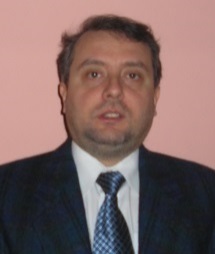« La matière organique dans ses environnements : Air – Terre – Mer »
Mardi 14 Mai : Journée de Séminaire
(inscription/soumission close – inscription sur place possible)
Photochemical processes induced by chromophoric dissolved organic matter on a global scale: Implications for the fate of contaminants
Davide Vione
Department of Chemistry, University of Torino, Torino, Italy
The chromophoric dissolved organic matter (CDOM) is the sunlight-absorbing fraction of the dissolved organic material that occurs in natural surface waters. Its ability to absorb sunlight couples with the fact that some of its chromophoric groups (especially aromatic carbonyls and quinones) are photoactive. Sunlight absorption by these CDOM chromophores generates the so-called photochemically produced reactive intermediates (PPRIs) such as the hydroxyl (•OH) radical, CDOM triplet states (³CDOM*), singlet oxygen (¹O₂), as well as long-lived photooxidants (LLPOs) that are most likely identified with phenoxy radicals. All these species are involved in the photodegradation of contaminants. Recent modelling advances have allowed for the assessment of the role of these reactions on a global scale, showing that the amount of CDOM can be even more important that latitude in determining reaction kinetics and pathways.
L. Carena, A. Garcia-Gil, J. Marugan, D. Vione. Global Modeling of Lake-Water Indirect Photochemistry Based on the Equivalent Monochromatic Wavelength Approximation: The Case of the Triplet States of Chromophoric Dissolved Organic Matter. Water Res. 2023, 241, 120153.

Insights into the Soil Humeome
Dr. Marios Drosos
IHSS Secretary
School of Agricultural, Forest, Food, and Environmental Sciences
University of Basilicata, Viale dell’Ateneo Lucano n. 10, 85100 Potenza, Italy
Tel. +39 0971206228,E-mail: marios.drosos@unibas.it
URL for web site: https://www.researchgate.net/profile/Marios_Drosos
Associate Editor of Chemical and Biological Technologies in Agriculture (www.chembioagro.com)
The new understanding of humic matter as supramolecular associations of relatively small heterogeneous molecules has gained a consensus following the progressively larger number of experimental evidence. This novel awareness has implied that humic molecules may be separated from each other by fractionation techniques and be analytically identified, thereby increasing our knowledge on their molecular structure. A sequential chemical fractionation method called Humeomics was thus conceived to solubilize not only unbound small molecules but also those bound in ester and ether linkages, which allowed separation of less chemically complex fractions, easier to characterize by high resolution chromatographic techniques. Humeomics was first successfully applied to humic extracts from soil, and then, directly to cropped and uncropped soils to reach a more detailed understanding of the soil Humeome, which is the molecular composition of the soil humic molecules totality. Therefore, a Humeome map could become the future platform of soil quality awareness.

Communications orales : 15 min + 10 min de questions
Jeudi 15 Mai :
– Matin : Visite de la Maison du vin de Bordeaux (Tarif : 22 euros)
– Après-midi : Assemblée Générale et réunion du Bureau Groupe Français IHSS
Les inscriptions en ligne sont closes, il est possible de s’inscrire sur place (chèque ou espèces)
Nous profitons de l’occasion pour vous inciter à prendre ou à renouveler votre adhésion de membre de l’IHSS Groupe Français pour l’année en cours 2024. Ces renouvellements se font uniquement sur le site de l’IHSS international à l’adresse suivante :
